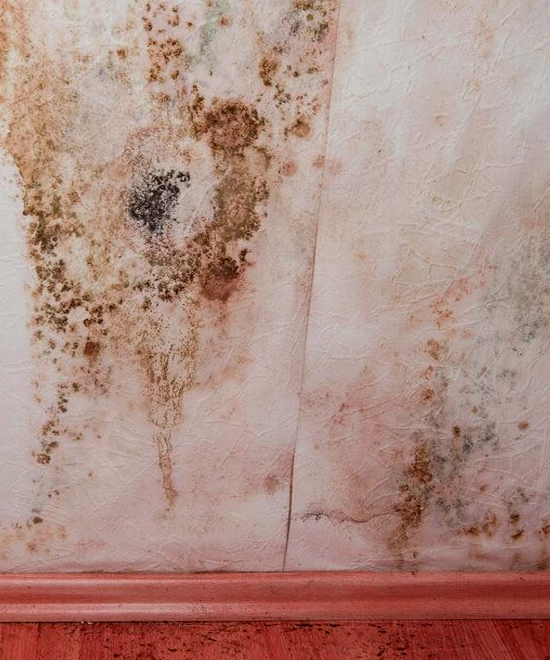
How Many Types of Mold are Dangerous? In all parts of the country, mold growth is frequent, both inside and outdoors. In our ecosystem, mold serves an important function, but mold that grows indoors can harm a person’s health and home structure. Each of the typical mold varieties can impair indoor air quality. In addition, if Stachybotrys chartarum gets discovered indoors, it is a hazardous and toxic mold that must get eradicated immediately. While mold is almost always present and generally not harmful, there are several varieties of mold or fungi that, if present in your house, can seriously endanger your and your family’s health.
What Kind of Mold is Dangerous in a House?
Stachybotrys chartarum, also known as “black mold,” is the most hazardous mold that may get discovered indoors. Both people and animals should avoid black mold. Fortunately, it is less prevalent than the other different types of mold.
However, because other varieties of mold can also produce dark-colored spores, it can be challenging to distinguish. The Center for Disease Control advises eliminating all molds immediately because it might be challenging to differentiate between black mold and other varieties.
Greenish-black in color, Stachybotrys chartarum has a rotting or musty odor. It grows most frequently next to water damage within a house, including on moist construction materials. A place with water damage and little airflow that has been vacant for months or a basement with a leaking pipe that hasn’t been fixed or inspected in months are ideal examples of places you might find this kind of dangerous mold.
It may result in symptoms like the flu, diarrhea, headaches, memory loss, and severe respiratory harm. Children are much more in danger of acquiring health issues from exposure to black mold because their lungs are still developing. It is generally found in highly moist sections of homes and other structures and has a pungent, musty, mildewy stench.
How Many Types of Mold are Dangerous? | What Does Toxic Mold Look Like?
Black mold has already got mentioned above, although it would be more accurate to describe Stachybotrys chartarum as having a greenish-black color. Additionally, toxic mold might have a slimy, wet surface or a soot-like, grey texture. You might even spot fuzzy orange or brown spots in some instances.
Avoid getting too close, and contact a professional immediately if you discover mold in your house that possesses any of these characteristics. Black mold typically appears as a dark stain covering a damp area that has seen flooding or water damage.
Since bathrooms with regularly used tubs and showers are more likely to experience flooding, water damage, or insufficient ventilation systems, these rooms are where they usually get present. Some other types of molds are:
- Basements and bathrooms are two familiar places in the house where Cladosporium usually appears. It typically grows on wood, rugs, wallpapers, walls painted with acrylic, and other moist organic materials. Cladosporium can be present in various varieties and hues, such as green, brown, grey, and black.
- Penicillium can grow on wet walls, wallpapers, floors, and carpets, but it gets most frequently present on food. Typically, it is either blue, yellow, green, or white.
- Alternaria frequently brings on allergies. It is dark grey, grows in patches, and most commonly develops on iron, paper, wallpapers, plaster, tile, brickwork, and wallpaper.
What is the Most Dangerous Mold to Humans?
How Many Types of Mold are Dangerous? Stachybotrys, sometimes referred to as black mold, is a very hazardous fungus. This genus of mold species creates mycotoxins whenever they are present, which can result in life-threatening diseases. They typically flourish on cellulose-containing materials that are damp for an extended period. Cardboard, gypsum board, ceiling tiles, and wood are examples of surfaces.
Additionally, Stachybotrys has a link to severe disease in young newborns. The elderly, young children and those with weakened immune systems are most vulnerable to sickness when exposed to this mold.
Learn all about: What is the Most Dangerous Mold to Humans
How to Tell if Mold is Toxic?
Above mentioned indications suggest that your home’s mold problem goes beyond being unsightly. Although none of these are absolute indicators of dangerous mold, if you spot a handful in your house, it might be time to contact a professional. Let’s explore them in more detail.
- Stinky Odor
A persistent, offensive stench in any of your rooms is the first thing you should look for. Typically, this is the first sign that you have a mold issue. Find the part of your home that is the most humid if you can smell something but not see it. The spores have dispersed here.
- Noticeable Growth
If you locate mold, keep an eye on it over the next several days since toxic mold proliferates. It can be harmful if you see that it has grown or expanded.
- Consistency and color
Not just black or dark green mold is harmful. Some hazardous mold has a grey color and may even feel like ash.
Summing Up!
If the mold gets discovered growing inside the house, it is preferable to get rid of it very away. It includes discarding expired food items and employing commercial cleaning supplies to remove mold from walls, carpets, and furniture. Removing mold from the bathroom, kitchen, or basement is crucial, not merely covering it with caulk or paint. The region should first have a thorough cleaning.







